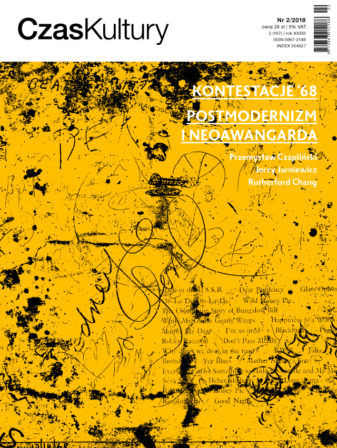Skandaliczne wyczyny „wyrzutków”
Scandalous doings of “outcasts”
Revolution of “misfits” in Japan
Author(s): Nikodem KarolakSubject(s): Cultural history, Social history
Published by: Stowarzyszenie Czasu Kultury
Keywords: Japanese avant-garde; counter-culture in Japan; Japanese New Wave; shingeki; post-shingeki; agura engeki; Gutai; Art Theatre Guild (ATG); Terayama Shūji; Tenjō Sajiki; Shibusawa Tatsuhiko; Numa Shōzō
Summary/Abstract: The changes in the post-war Japanese art may be compared to an explosion which turned the artistic scene upside down, primarily due to the young Tokio-based intelligentsia which decided to review their own tradition. David Goodman describes the 1960s in Japan as a period of eschatological reflection, living through post-war trauma and leftist resistance against the Treaty of Security signed with the United States in 1960. The art of that period, full of conflicts, grotesque deformation, themes of strong political and erotic tone expressed the impossibility of capturing the post-war reality which evaded human perception. The paper presents an overview of the modernist (Japanese: kindai geijustsu) and avant-garde art (Japanese: zen’ei geijutsu), starting with the earliest formal experiments to finish with the peak years of counter-culture and opposition – art was frequently scandalous, but very original, combining the sacrum and profanum, tradition and modernity.
Journal: Czas Kultury
- Issue Year: XXXIV/2018
- Issue No: 02
- Page Range: 27-39
- Page Count: 13
- Language: Polish
- Content File-PDF

